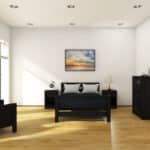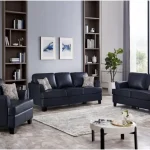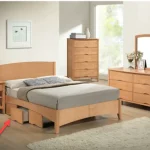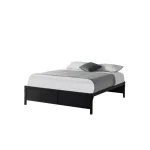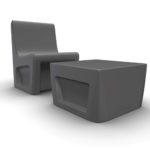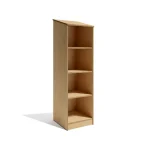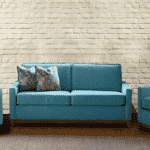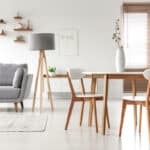What Materials Are Best For Long-Lasting Group Living Environments
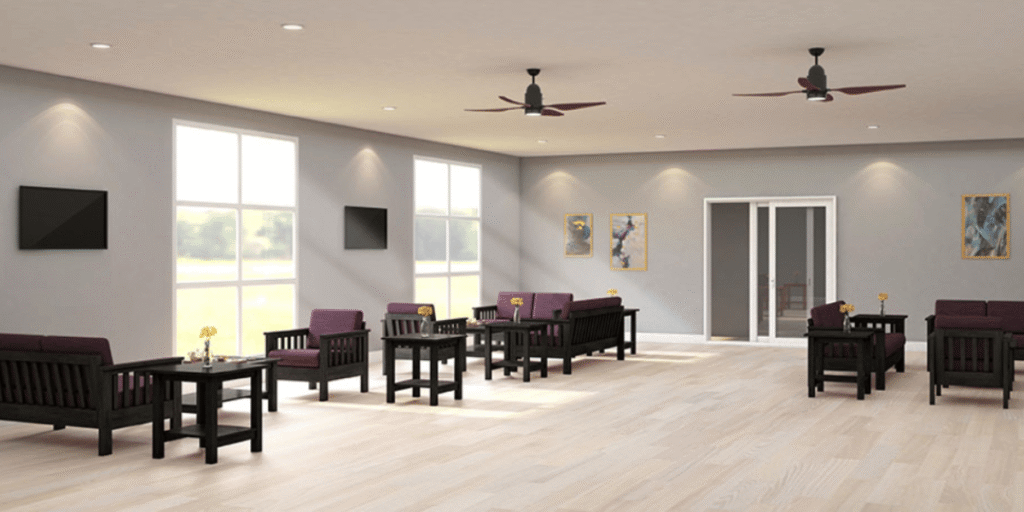
Selecting the right furniture materials for group living environments plays a vital role in creating safe, hygienic, and long-lasting spaces. Whether in a behavioral health setting, transitional housing, or supportive community living, furniture must withstand constant use, frequent cleaning, and exposure to moisture and disinfectants. Strong, easy-to-maintain materials promote both durability and cleanliness, supporting resident comfort and reducing long-term maintenance needs.This guide explores the most dependable high-traffic furniture materials used in group living environments — from metals and laminates to solid surfaces, plastics, and upholstery — to help you make informed, lasting choices.
Understanding the Demands of Shared Spaces
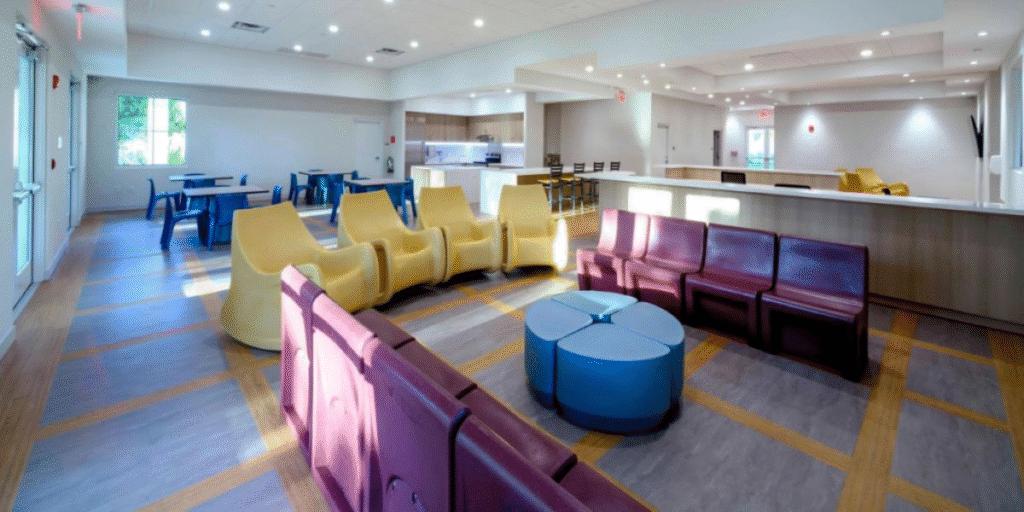
Healthcare and shelter environments demand reliable, durable, and hygienic furniture. Heavy-use furniture and shelter furniture must perform consistently under pressure from constant movement, heavy use, and frequent sanitation. Selecting the right furniture materials helps maintain comfort, functionality, and cleanliness.
High-Traffic and Heavy-Duty Usage
Group Living Environments experience non-stop activity. Furniture in these environments must endure repeated use without breaking down. Investing in high-traffic furniture helps reduce long-term repair and replacement costs.
Durable steel frame furniture or reinforced metal designs resist bending and corrosion, maintaining structure even with frequent repositioning. Strong materials deliver value over time by lowering maintenance expenses and keeping furniture in reliable condition.
Hygiene and Maintenance
Hygiene is central to group living environment furniture design. Non-porous materials stop bacteria and fluids from seeping into surfaces, allowing for quick and effective cleaning. Materials must tolerate disinfectants and moisture without losing quality. Scratch-resistant, sealed surfaces are vital for maintaining sanitation and preventing contamination.
Best Materials for High Use Environments
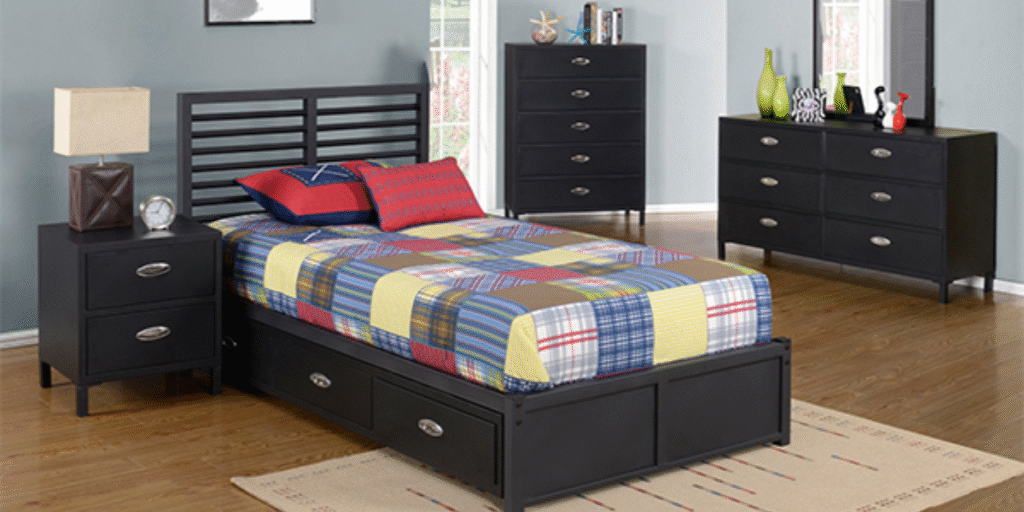
Group living environments need furniture that upholds high standards of cleanliness and safety. Every component of this furniture must endure cleaning chemicals, moisture, and frequent use. The materials listed below are well-suited for healthcare facilities focused on durability and hygiene.
Frames and Structural Components
Stainless Steel: This material remains the top choice for healthcare furniture. As a non-porous material, stainless steel offers excellent resistance to corrosion and cleaning agents. Medical-grade 316 stainless steel provides even greater protection, ideal for hospital beds, carts, and equipment tables.
Powder-Coated Steel: Steel frame furniture finished with powder coating combines strength with affordability. The smooth surface resists scratches and cleaning damage, making it ideal for busy areas where maintenance is frequent.
Aluminum: Lightweight yet dependable, aluminum is perfect for portable furniture such as IV stands or wheelchairs. It resists rust while remaining easy to move and maintain.
Surfaces and Cabinetry
Solid Surfaces: Seamless non-porous materials such as Corian® are popular for countertops and work areas. They are resistant to stains and bacteria, helping maintain sterile environments in clinical zones.
High-Pressure Laminates (HPL): Strong and easy to disinfect, HPL is one of the most reliable furniture materials in hospital spaces. It withstands impact and cleaning chemicals without losing its appearance.
ABS Plastic: Lightweight and impact-resistant, ABS is used for cabinets, panels, and storage units. Its smooth surface simplifies sanitation and supports a clean look.
Upholstery
Antimicrobial Vinyl and Polyurethane: These non-porous materials repel fluids and inhibit bacterial growth. They are practical for mattresses, chairs, and recliners that require routine cleaning.
Performance Fabrics: Designed for strength and comfort, performance fabrics feature moisture-resistant coatings. They hold up well in waiting areas and lounges while maintaining a professional appearance.
Best Materials for Shelter Environments
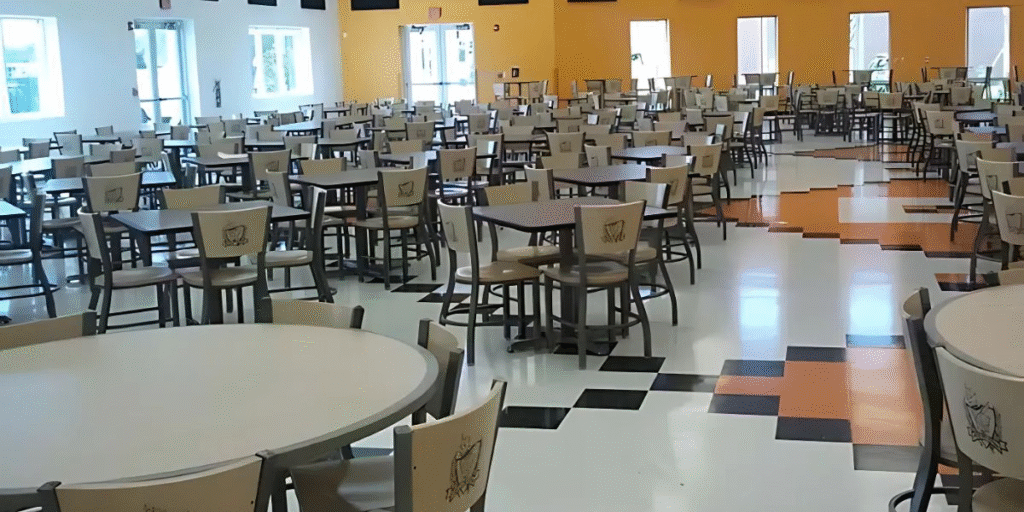
Shelter settings need practical, cost-effective, and tough furniture. Shelter furniture should handle constant use while staying easy to clean and maintain. The right furniture materials bring comfort, durability, and a welcoming atmosphere to residents.
Frames and Structural Components
Metal: Reinforced steel frame furniture gives long-term stability. Welded connections add strength, preventing wobbling or weakening with use.
Solid Wood: Commercial hardwoods treated with protective coatings create a warm, natural feel. They are strong, appealing, and resistant to daily wear.
Plywood: An economical yet reliable option, plywood provides moisture resistance and structural strength for many furniture designs.
Surfaces and Storage
Laminated Wood: This furniture material provides smooth, wipeable surfaces suitable for dining or communal spaces. Its sealed coating protects against spills and moisture.
Metal Storage Units: Metal cabinets and lockers are secure, resilient, and easy to disinfect. They serve shelters well where organization and hygiene are priorities.
Recycled Plastic: A durable and non-porous material, recycled plastic offers environmental and performance benefits. It resists moisture, stains, and physical wear, making it an emerging favorite in shelter furniture.
Upholstery
High-Density Foam: Comfort and durability depend on high-density foam that maintains shape through heavy use. It provides dependable support and comfort.
Easy-to-Clean Upholstery: Fabrics with high double-rub ratings resist staining and friction damage, ideal for high-traffic furniture used in shared spaces.
What Furniture Material Lasts the Longest?
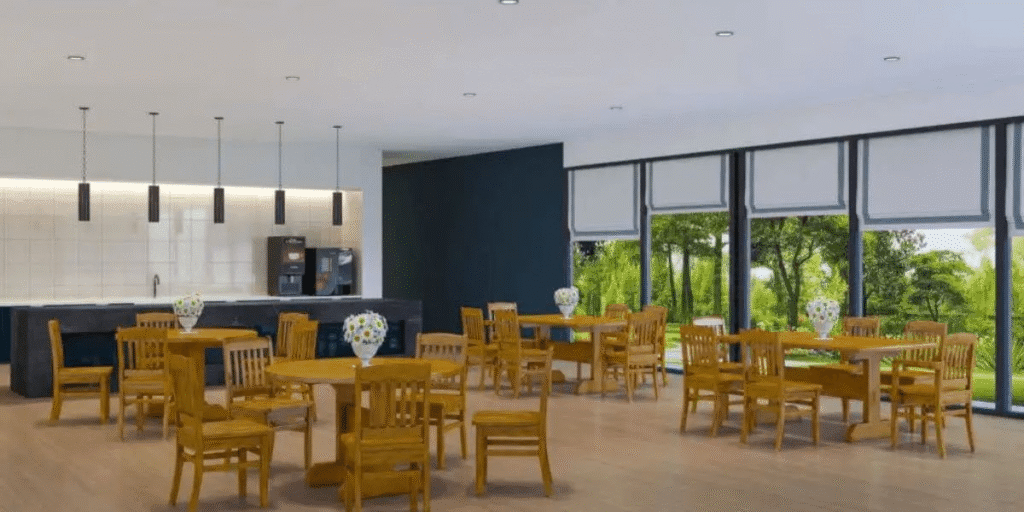
Durability depends on structural strength, resistance to corrosion, and ease of maintenance. Steel frame furniture consistently ranks as one of the longest-lasting options for high-use facilities.
- Stainless Steel: Excels at resisting corrosion and impact damage.
- High-Pressure Laminates: Keep their smooth appearance after years of heavy use.
- Solid Surface Materials: Can be refinished or repaired, extending usability.
Using non-porous materials helps protect furniture from moisture and staining. Facilities that choose durable materials benefit from reduced maintenance and extended service life.
What Materials Are Best for Healthcare Environments?
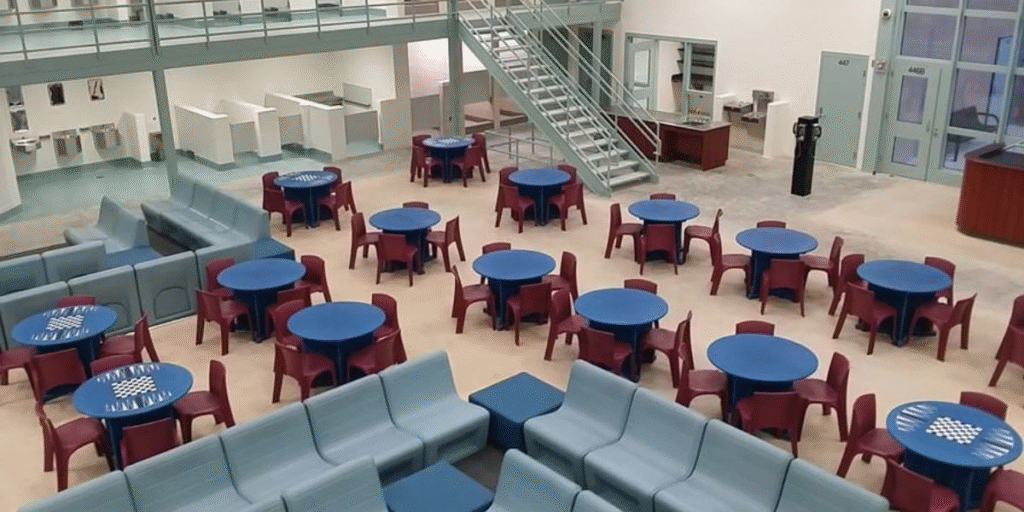
Healthcare environments depend on materials that support cleanliness and reliability. The top healthcare furniture materials include:
- Stainless Steel: Offers a high level of hygiene and strength.
- Powder-Coated Steel: Smooth and resistant to cleaning chemicals.
- Solid Surfaces and HPL: Ideal for patient rooms, labs, and workstations.
- Antimicrobial Vinyl and Polyurethane: Promote hygiene and durability in upholstery.
These furniture materials keep hospital furniture functional, easy to sanitize, and attractive through years of use.
What Material Are Healthcare Chairs Made Of?
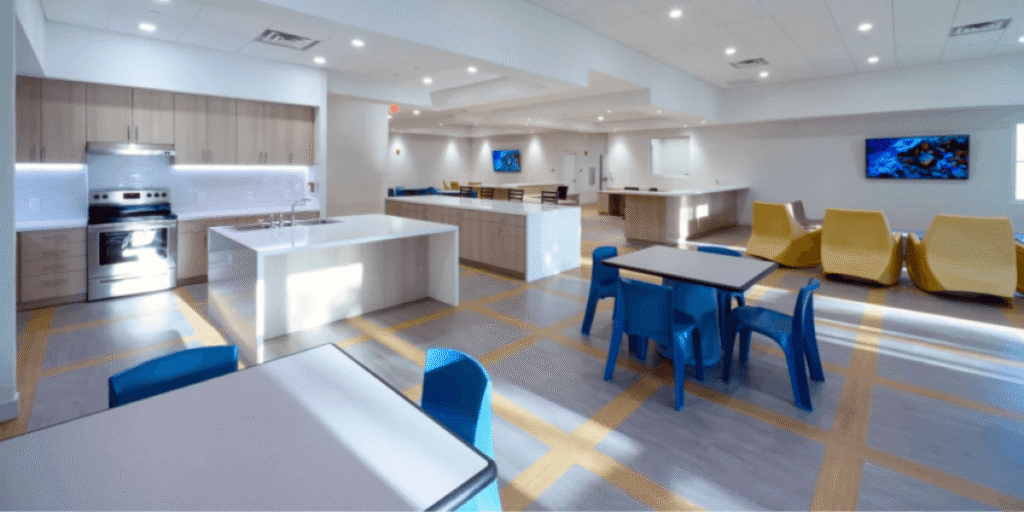
Chairs in healthcare settings require durability and cleanliness while providing comfort. Common materials include:
- Frames: Built from steel frame furniture or aluminum for stability.
- Seats and Backs: Padded with high-density foam and wrapped in non-porous materials like vinyl.
- Armrests and Bases: Created from stainless steel or molded ABS for strength and easy cleaning.
This mix delivers reliability and comfort suitable for patient areas and waiting rooms.
What Is the Toughest Furniture Material?
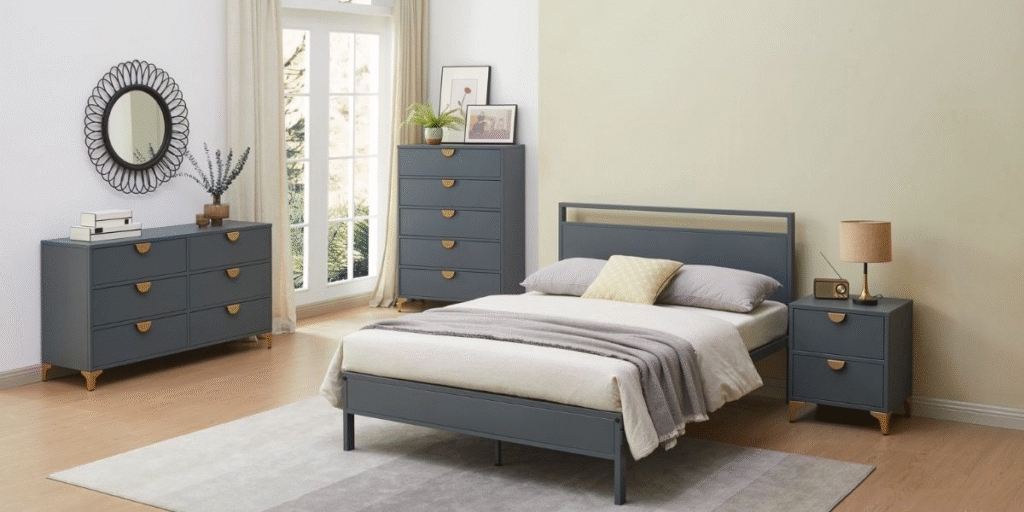
The toughest furniture materials can withstand stress, cleaning agents, and constant use. Steel remains the strongest choice for structural elements due to its resilience and stability.
- High-Pressure Laminate (HPL): Handles scratches and heavy use in high-traffic furniture.
- Solid Surface Materials: Offer seamless strength and easy repair options.
- Steel Frame Furniture: Provides the foundation for long-term durability in hospitals and shelters.
These materials perform well under pressure and reduce maintenance over time.
Maintenance and Life Cycle Considerations
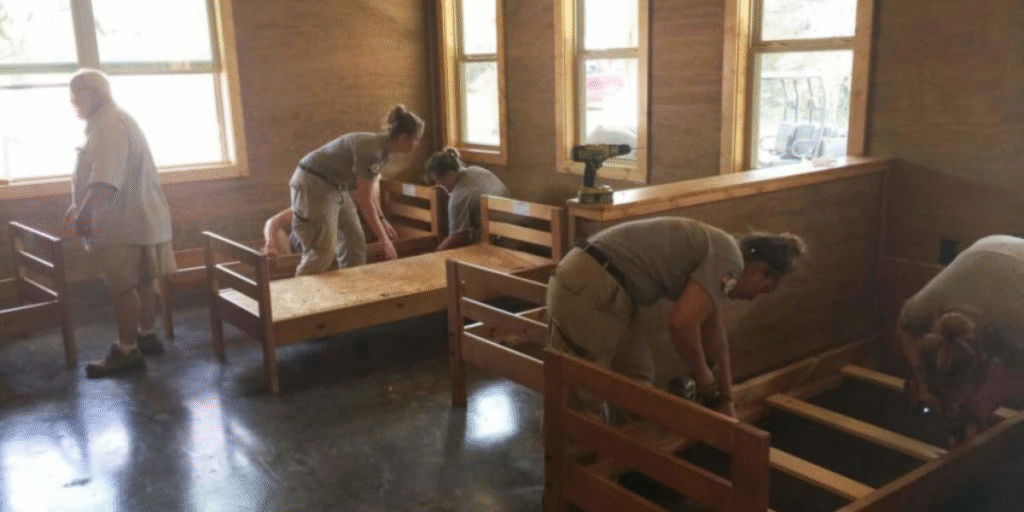
Maintenance plays a major role in extending furniture’s lifespan. Quality furniture materials and non-porous materials help maintain hygiene and minimize replacement costs. Well-built furniture saves money by reducing downtime and maintenance efforts.
Cleaning Compatibility
Smooth, sealed surfaces allow for thorough cleaning and quick disinfection. Hospital furniture and shelter furniture constructed from non-porous materials withstand exposure to moisture and chemicals while maintaining structural integrity. This quality supports long-term hygiene and safety.
Cost Efficiency and Longevity
Premium materials require a higher initial investment but deliver extended value. Durable steel frame furniture and high-traffic furniture maintain their form and finish, reducing expenses over time and providing dependable performance.
Furniture Concepts Promise: Furniture Designed to Endure in Group Living Environments, Shelters, and Human Service Spaces
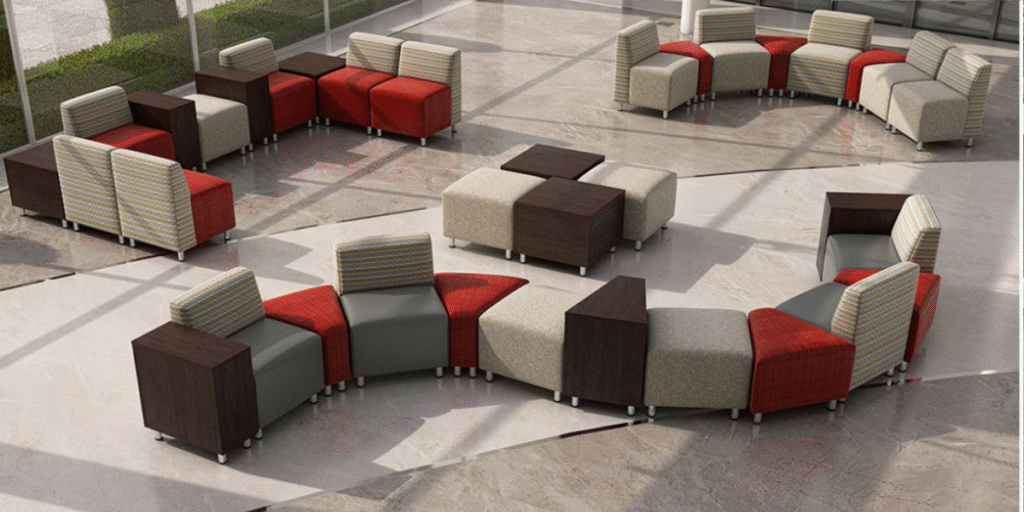
At Furniture Concepts, our goal as a wholesaler is to supply durable furniture that combines strength, cleanliness, and comfort. We offer quality wholesale solutions that support recovery, safety, and a sense of community well-being.
Who We Serve
We provide wholesale furnishings for Behavioral Healthcare, Substance Use Disorder programs, Transitional Housing, Supportive Housing, Shelters, Assisted Living, and Group Homes. Our furniture materials are selected to meet the rigorous demands of high-use environments.
Our Philosophy
As a wholesaler, we are dedicated to delivering durable, safe, and clean furniture at scale. Each item of hospital furniture and shelter furniture we distribute represents reliability, longevity, and thoughtful design suited for professional use.
Why Partner with Us
With over two decades of wholesale experience, Furniture Concepts has built trusted partnerships across the country. Our team supports clients from order placement through delivery, maintaining high standards of consistency and performance. Our high-traffic furniture lines provide dependable solutions that minimize maintenance and create long-term value.
Conclusion
Selecting durable and hygienic furniture materials is essential for facilities that value long-term quality and comfort. Whether designing hospital furniture or shelter furniture, using steel frame furniture, solid surfaces, and non-porous materials offers the best combination of strength and cleanliness in high-traffic furniture settings.
By choosing reliable construction and quality materials, facilities can create safe, comfortable spaces that last for years.
Partner with Furniture Concepts today to design durable, hygienic, and high-traffic furniture built to endure. Contact us to bring comfort, strength, and long-lasting quality to your space.

